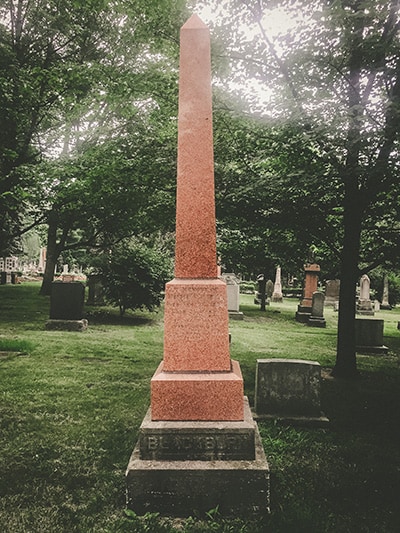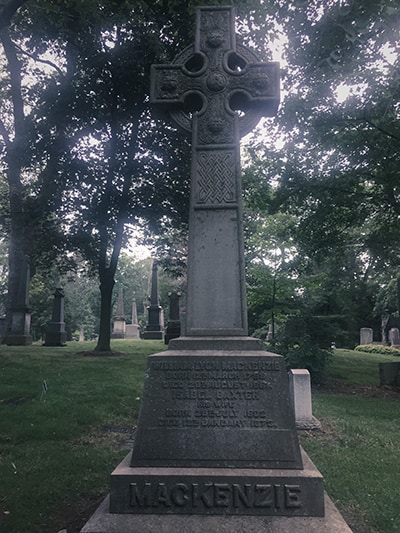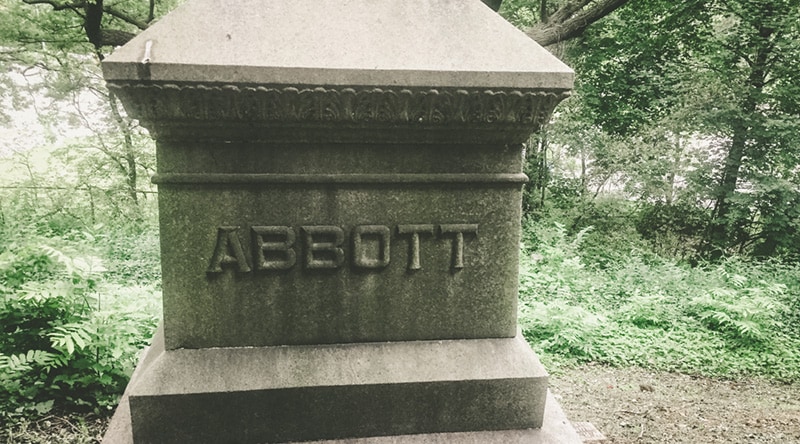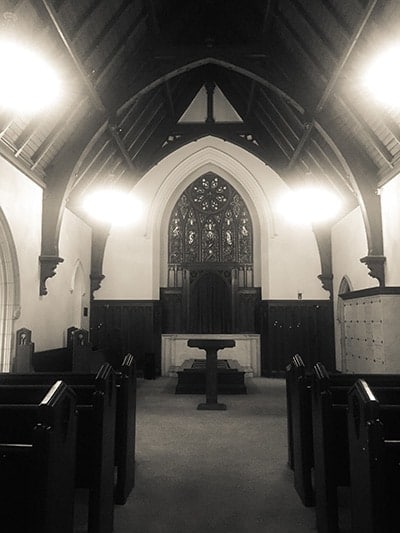
Victorian Toronto looked very different than Toronto of today. Not only was there a severe lack of skyscrapers and glass condos, but Torontonians were not fans of public parks. For the most part, the only public green spaces were cemeteries. Very quickly, cemeteries like the Toronto Necropolis (200 Winchester St., in historical Cabbagetown east of Parliament St.) became places to spend your free time, picnicking, strolling, and meeting a beau. If you choose to visit the Necropolis today, you can still bring a picnic if you choose. While you’re there, why not take a minute pay your respects to some of the intriguing people spending their afterlife interred there.

Lucie (?-1895) and Thornton Blackburn (1812-1890)

Thornton and Lucie Blackburn were escaped slaves from Kentucky who were captured and jailed in Detroit in 1833. Lucie escaped when she covertly changed places and dress with one of her visitors. She was later smuggled into Canada. After that, Thornton was heavily guarded and shackled. On the day that he was scheduled to be transferred, the city of Detroit rioted. 400 men of all races stormed the jail and snuck Thornton out and across the Detroit River into Windsor. Thornton and Lucie were reunited in Toronto, where they founded the first Taxi company in the city. The company was called “The City” and the colours of their cabs (which were pulled by a horse) were yellow and red. These cabs became so synonymous with transportation, that when the TTC opened they chose the same colour scheme. Lucie and Thornton Blackburn became pillars of the community, contributing funds to build Little Trinity Church, and often helped escaped slaves settle in Toronto. Thornton returned to the US to smuggle his mother out of slavery.
George Brown (1818-1880)
Father of Confederation, senator, and Reform politician, George Brown is best known locally as the founder and editor of the Toronto Globe, which would eventually become the Globe and Mail. In 1880, he was shot in the leg by a disgruntled employee. Brown originally thought that the wound was a minor injury, but it soon turned gangrenous and Brown would die seven weeks later. George Brown College was named in his honour.

Ghost Tours & Paranormal Adventures
William Lyon Mackenzie (1795-1861)
 In 1834, William Lyon Mackenzie became the City of Toronto’s first mayor. He later turned his attention to Provincial politics but was increasingly disappointed in the entrenchment of conservative policies by the ruling elite. Eventually, in the winter of 1837, Mackenzie rallied his supporters north of the city (around present-day Yonge and Eglinton) and prepared to invade Toronto. But the city was waiting for them; Mackenzie’s rebels were soundly defeated, and Mackenzie himself was forced to flee to the United States. He was eventually pardoned and was allowed to return to Canada, where he died in his Toronto home. His former home has become known as one of the most paranormally active sites in the city. We share the ghost stories every night on our Original Haunted Walk of Toronto.
In 1834, William Lyon Mackenzie became the City of Toronto’s first mayor. He later turned his attention to Provincial politics but was increasingly disappointed in the entrenchment of conservative policies by the ruling elite. Eventually, in the winter of 1837, Mackenzie rallied his supporters north of the city (around present-day Yonge and Eglinton) and prepared to invade Toronto. But the city was waiting for them; Mackenzie’s rebels were soundly defeated, and Mackenzie himself was forced to flee to the United States. He was eventually pardoned and was allowed to return to Canada, where he died in his Toronto home. His former home has become known as one of the most paranormally active sites in the city. We share the ghost stories every night on our Original Haunted Walk of Toronto.
Joseph Burr Tyrell (1858-1957)
Joseph Burr Tyrell was going to be a lawyer. He got his law degree from the University of Toronto in 1880, but not long after, his doctor told him that he should find a job outdoors for his health. Following his doctor’s advice, Tyrell joined several geological expeditions all around Canada. In 1884 Tyrell was in Drumheller when he uncovered bones. Lots of bones. These remains would later become known as the Albertosaurus. Tyrell eventually retired to the north-east end of Scarborough where he cultivated apple orchards; these orchards would later become the land used for the Toronto Zoo.
Anderson Ruffin Abbott (1837-1913)
Anderson Ruffin Abbott was the first Canadian-born Black doctor and surgeon. He had received his license to practice medicine in 1861, and two years later in 1863, he entered service as a civilian surgeon during the American Civil War. He was extraordinarily popular with both patients and politicians, eventually garnering a lasting friendship with President Lincoln (when Lincoln died, Mary Lincoln gave Abbott the shawl that Lincoln had worn to his inauguration as a gift). Abbott continued to practice medicine in both Chicago and Toronto and became a prominent member of Toronto’s black community in the years to come.

The necropolis is also the final resting spot of: John Ross Robertson, founder of the Toronto Telegram; former NDP leader Jack Layton; world champion oarsman Ned Hanlan. The Necropolis also features a monument honouring Samuel Lount and Peter Matthews, hanged in 1838 for their roles in the Mackenzie Rebellion.


